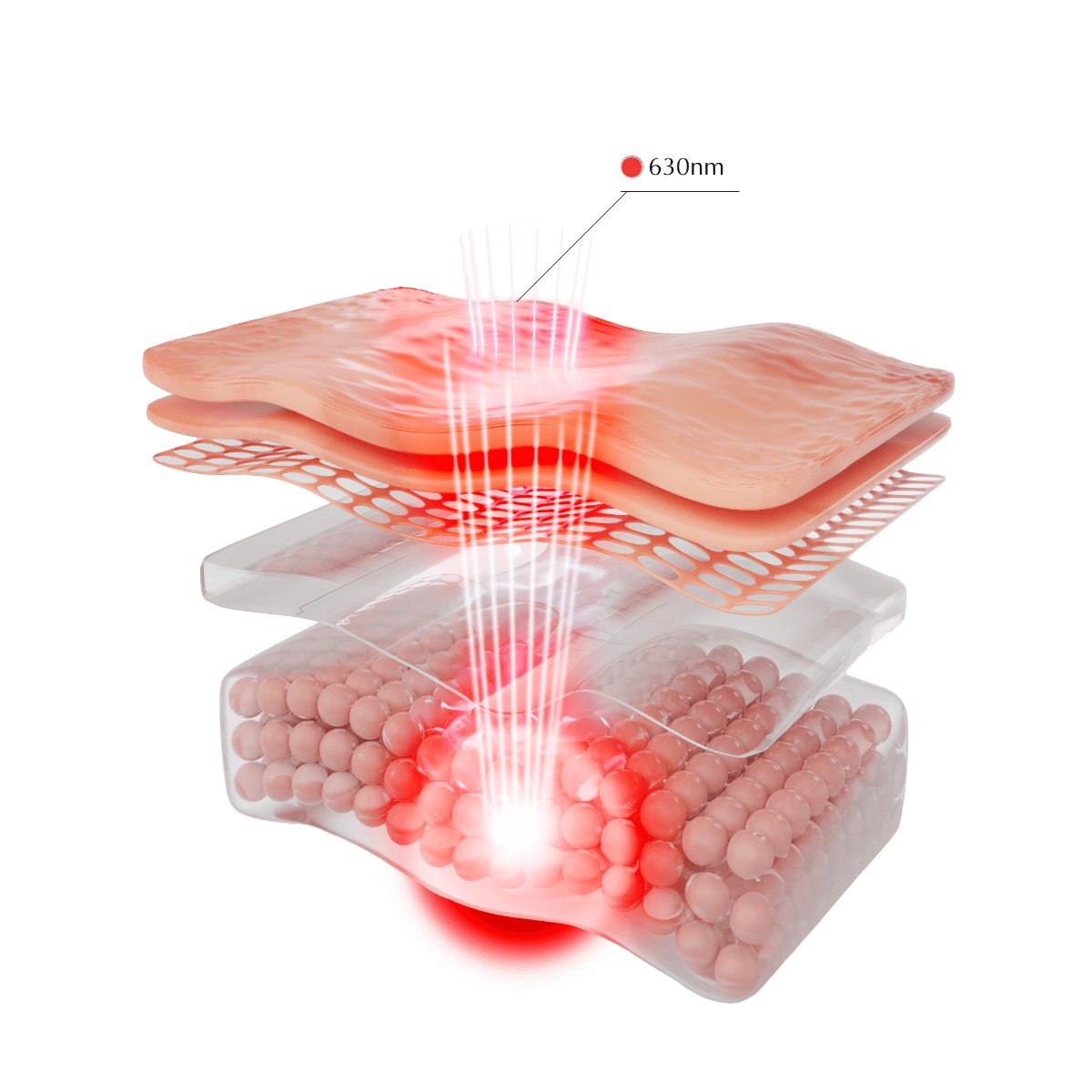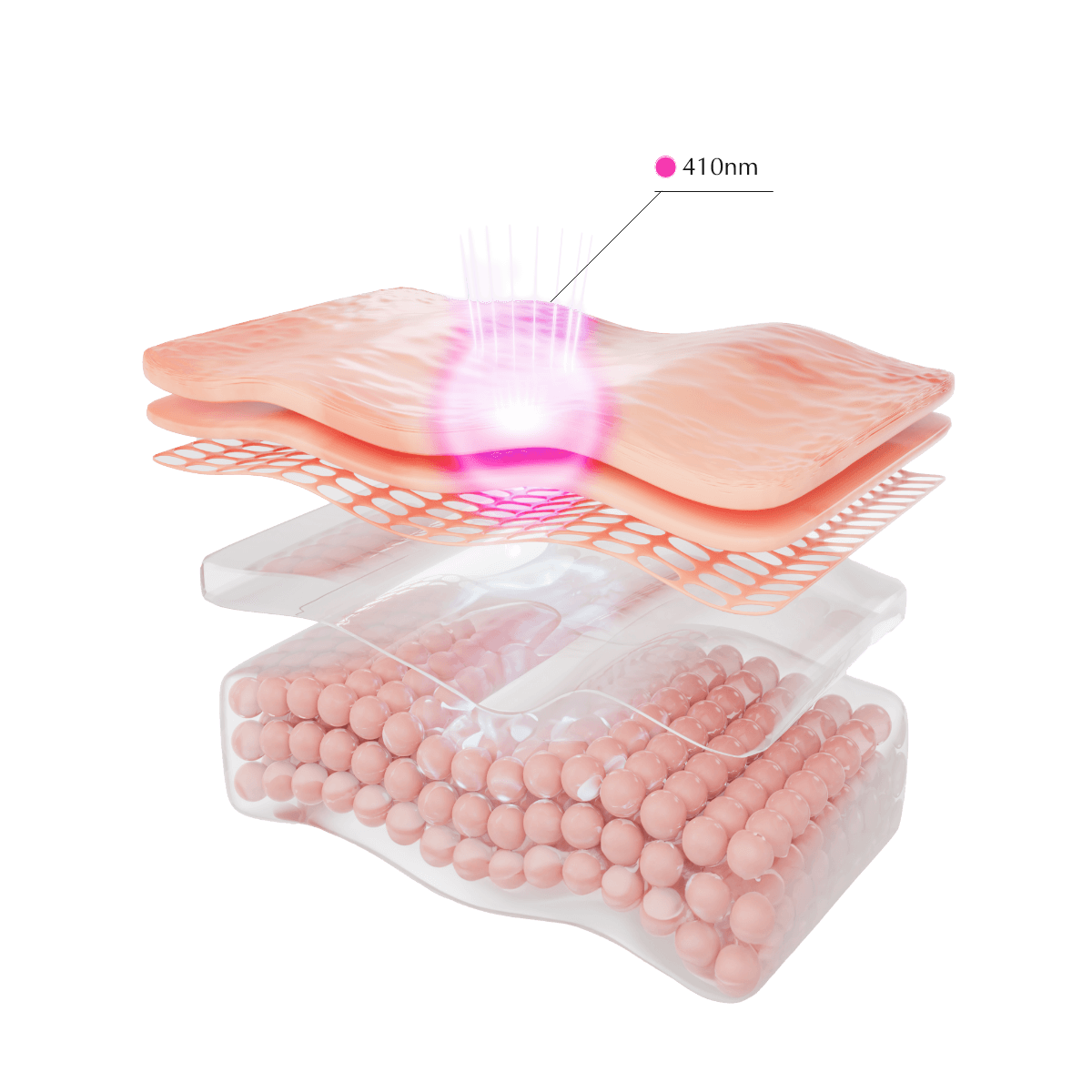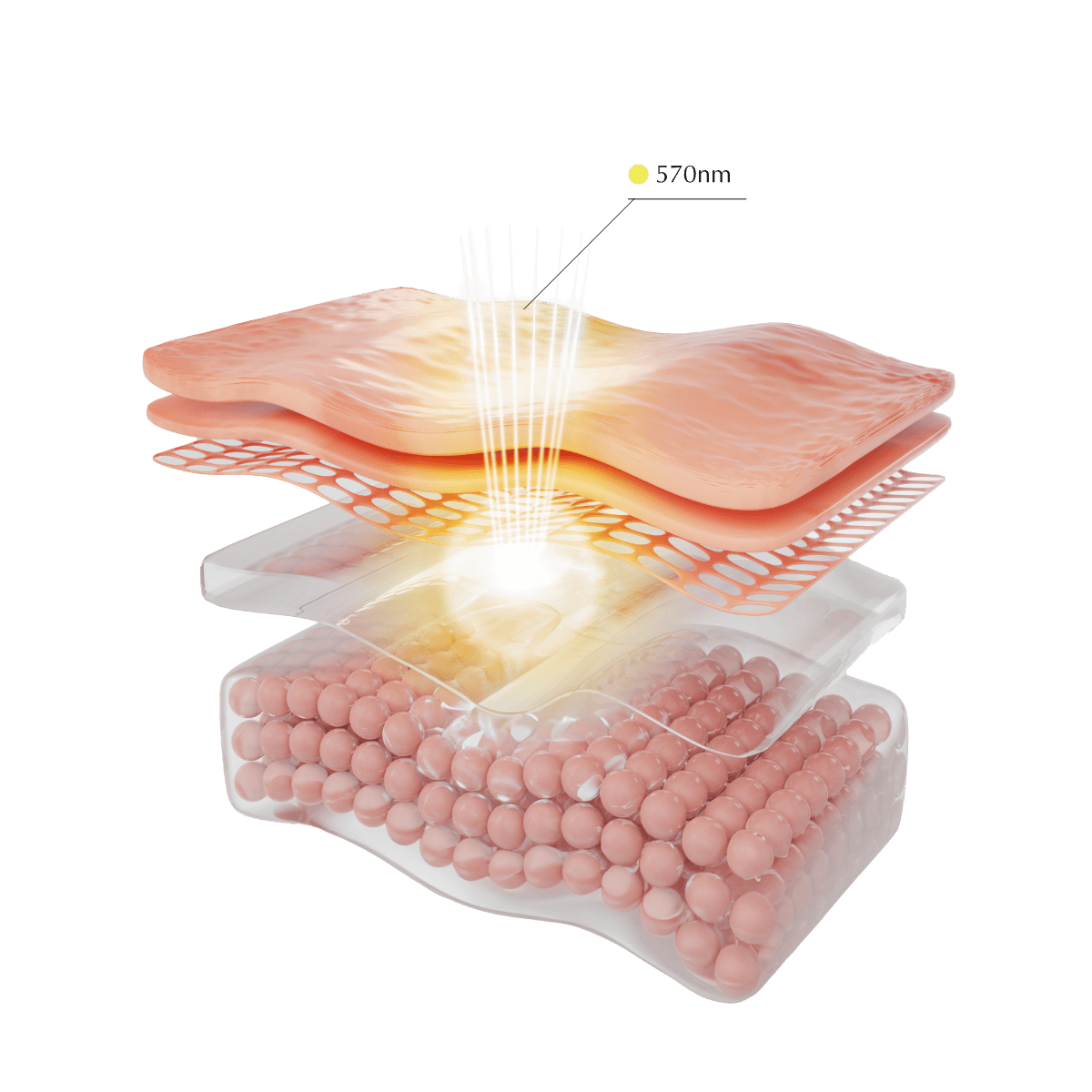The Revitalizing Journey: Red Light Therapy for Skincare
Introduction:
In the realm of non-invasive skin enhancement, Red Light Therapy emerges as a cornerstone, its gentle wavelengths cradling the skin back to its youthful vigor. With a soft, crimson glow, this therapy promises to lead skin on a journey back to its days of resilience and radiance. Red Light Therapy, known for its ability to penetrate deeply without irritation, is making its mark in skincare regimens around the world. Through stimulating collagen production to restoring a smooth, even texture, this therapy is not just about fleeting beauty fixes — it's about foundational skin health.
As we delve into the depths of red light and its interaction with the skin, we uncover a compelling narrative: one where light is not just a tool for visibility but a medium for transformation. In this comprehensive exploration, we'll unravel the science behind Red Light Therapy, the compelling clinical evidence backing its efficacy, and practical tips to seamlessly integrate it into daily skincare routines.
Unveiling Red Light Therapy: A Beacon for Skin Health
- The Scientific Essence of Red Light
- Skin-Deep: How Red Light Interacts with Cells
Clinical Triumphs: Validating Red Light Therapy in Skincare
- Bolstering Collagen: The Studies Speak
- Fine Lines to Firmness: Documenting the Rejuvenation
Targeted Solutions: Red Light Therapy for Diverse Skin Needs
- The Anti-Aging Ally: Reducing Wrinkles and Fine Lines
- Scars and Uneven Texture: A Path to Smoothness
- From Redness to Radiance: Calming Inflammation with Red Light
Empowering Home Treatments: Maximizing Red Light Therapy
- Selecting the Perfect Red Light Device
- Weaving Red Light into Your Skincare Tapestry
- Best Practices: Safety and Efficacy in the Spotlight
- Looking Forward: The Future of Red Light in Skincare Innovation
- Emerging Research and New Frontiers
- Red Light Therapy: A Staple in Modern Skincare
Unveiling Red Light Therapy: A Beacon for Skin Health
In an age where the pursuit of wellness and beauty converge, Red Light Therapy (RLT) stands out as a beacon for skin health. This therapeutic technique utilizes specific wavelengths of red light to promote skin healing and rejuvenation, offering a host of benefits that cater to a wide array of skin concerns.
The Scientific Essence of Red Light
Red light exists on the visible spectrum, boasting wavelengths between 630 to 700 nanometers. This range is particularly effective in skin therapy due to its ability to penetrate the skin to a depth of 8-10 millimeters. At this level, red light exerts its influence, providing a safe alternative for enhancing skin health.
The science of RLT revolves around its ability to stimulate and energize the cellular mitochondria, often referred to as the 'powerhouses' of the cell. By enhancing mitochondrial function, RLT promotes increased production of adenosine triphosphate (ATP), which fuels cellular activities, including those pivotal to skin repair and rejuvenation.
Skin-Deep: How Red Light Interacts with Cells
When red light permeates the skin, it elicits a cascade of biological processes. One of the most notable is the stimulation of fibroblasts, cells crucial for producing collagen and elastin. These structural proteins are the scaffolding of the skin, providing elasticity and firmness. An uptick in collagen and elastin can result in reduced visibility of wrinkles and fine lines, improved skin texture, and a more youthful overall appearance.
Additionally, RLT has been shown to increase circulation, bringing more oxygen and nutrients to skin cells, further enhancing the skin's natural glow and vitality. Its ability to modulate inflammation is also significant, as this can help in treating conditions like acne, rosacea, and eczema.
Research, such as that found in the Journal of Photochemistry and Photobiology, has substantiated these claims, highlighting RLT's efficacy in improving skin tone and increasing the density of skin collagen. Another study in the Dermatologic Surgery journal reports that RLT can significantly impact photodamaged skin, improving complexion and consistency.
Red Light Therapy's interaction with skin cells is a testament to its potential as a powerful tool in the realm of dermatology and cosmetic skincare. It invites a deeper exploration into its benefits, promising a safe, non-invasive path to healthier, more radiant skin.
Clinical Triumphs: Validating Red Light Therapy in Skincare
The clinical triumphs of Red Light Therapy (RLT) are the pillars upon which its reputation in skincare rests. With a growing body of scientific research, RLT is not merely a cosmetic fad but a clinically validated treatment that is reshaping the landscape of dermatological care.
Bolstering Collagen: The Studies Speak
Collagen is the cornerstone of skin structural integrity, and the ability of RLT to bolster its presence in the skin is one of the most significant clinical findings. Numerous studies have demonstrated that RLT can enhance collagen production, leading to improved skin texture and a reduction in fine lines. For example, a study published in the Lasers in Surgery and Medicine journal indicated that individuals who underwent RLT experienced increased collagen density and improved skin firmness. This underscores the role of RLT in not only addressing superficial skin issues but also in promoting profound structural changes that underlie skin health.
Fine Lines to Firmness: Documenting the Rejuvenation
The journey from visible fine lines to restored firmness is documented through clinical research that celebrates the efficacy of RLT. A groundbreaking study in the Annals of Biomedical Engineering showed that RLT treatments led to a noticeable reduction in the appearance of fine lines and wrinkles. This rejuvenation is attributed to RLT's ability to stimulate the skin's natural repair processes, enhancing tissue regeneration and elasticity.
The evidence supporting RLT's role in skincare continues to accumulate, painting a picture of a modality that is as effective as it is innovative. By leveraging the body's intrinsic healing mechanisms, RLT stands at the forefront of non-invasive skin rejuvenation therapies, offering hope and results to those seeking to turn back the hands of time.
Targeted Solutions: Red Light Therapy for Diverse Skin Needs
Red Light Therapy (RLT) has risen to prominence not just as a general skin enhancer, but as a targeted solution for specific dermatological challenges. Its precise action on various skin conditions underscores its versatility and effectiveness in addressing individual skincare needs.
The Anti-Aging Ally: Reducing Wrinkles and Fine Lines
The search for the fountain of youth may be as old as time, and RLT offers a modern-day equivalent. As an anti-aging ally, RLT stands out for its ability to diminish the visible signs of aging such as wrinkles and fine lines. The red wavelengths are particularly adept at penetrating the skin and stimulating the production of collagen, which plumps the skin and smooths out fine lines. For instance, clinical trials have highlighted a significant improvement in skin texture and elasticity following RLT treatment, suggesting a reversal of the aging process at a cellular level.
Scars and Uneven Texture: A Path to Smoothness
Beyond its anti-aging prowess, RLT offers hope for those battling scars and uneven skin texture. The light therapy promotes the remodeling of scar tissue and encourages the repair of the extracellular matrix, leading to a smoother skin surface. Studies have shown that patients with various types of scarring, including acne scars, have experienced visible improvement in skin texture after consistent RLT sessions.
From Redness to Radiance: Calming Inflammation with Red Light
One of RLT's most profound effects is its ability to reduce inflammation and redness, common symptoms of conditions like rosacea, psoriasis, or general skin irritation. The anti-inflammatory properties of red light work to soothe the skin, reducing redness and bringing out the skin's natural radiance. Research has documented a decrease in inflammatory markers and an overall calming effect on the skin, underscoring RLT's role in achieving a balanced and radiant complexion.
In addressing these diverse skin concerns, RLT emerges not just as a catch-all solution but as a strategic, targeted approach to skin health. It's a testament to the therapy's adaptability and its potential to cater to a range of skincare goals, from anti-aging to healing and beyond.
Empowering Home Treatments: Maximizing Red Light Therapy
In the comfort of our homes, we now have the power to harness the benefits of Red Light Therapy (RLT), once exclusive to professional clinics. With the right approach and tools, RLT can become an integral part of your daily skincare routine, providing benefits that rival those of in-office treatments.
Selecting the Perfect Red Light Device
The first step in bringing RLT home is choosing the right device. It should emit light at the proper wavelengths for skincare, generally between 630 to 700 nanometers. Look for FDA-cleared devices that have proven safety and efficacy. Consider the size, shape, and flexibility of the device to ensure it suits your needs and can target the areas of your skin you wish to treat.
Weaving Red Light into Your Skincare Tapestry
Integrating RLT into your skincare routine requires consistency. For best results, use the device according to the manufacturer's instructions, typically several times a week. It's usually best to use RLT after cleansing and before applying moisturizers or serums to allow the light to penetrate effectively.
Best Practices: Safety and Efficacy in the Spotlight
While RLT is known for its safety, it's crucial to follow best practices. Don't overuse the device; more isn't always better. Protect your eyes with safety goggles if recommended, and never look directly into the light. Start with shorter sessions and gradually increase as your skin adapts to the treatment.
Looking Forward: The Future of Red Light in Skincare Innovation
As skincare technology advances, the potential of RLT grows. Innovations in device design and functionality are making treatments more effective and user-friendly. The development of smarter, connected devices may allow for personalized treatment plans and tracking progress through apps.
Emerging Research and New Frontiers
Ongoing research continues to uncover the full potential of RLT. As we learn more about how light interacts with skin cells, we can expect to see tailored light therapies for a range of skin issues, from acne to hyperpigmentation, each backed by scientific evidence.
Red Light Therapy: A Staple in Modern Skincare
RLT is rapidly becoming a staple in skincare regimens worldwide. As evidence of its benefits continues to mount, it's clear that RLT is more than a trend—it's a transformative approach to skincare that's here to stay, offering a blend of science and convenience that can lead to healthier, more radiant skin.
Conclusion:
Red Light Therapy has transcended its initial novelty to become a mainstay in the pursuit of optimal skin health. Through its ability to promote collagen production, enhance tissue repair, and reduce signs of aging, RLT has demonstrated that the best of skincare innovation can be both accessible and effective. As we continue to witness advancements in technology and a deeper understanding of its mechanisms, RLT remains a glowing testament to the beauty industry's ability to empower individuals in their skincare journeys.
Are you ready to embrace the transformative power of Red Light Therapy? Visit our Light Therapy page to find more information about Light Science, and start your way to radiant, youthful skin today -- your skin deserves it.
Sources:
Wunsch, A., & Matuschka, K. (2014). A Controlled Trial to Determine the Efficacy of Red and Near-Infrared Light Treatment in Patient Satisfaction, Reduction of Fine Lines, Wrinkles, Skin Roughness, and Intradermal Collagen Density Increase. Photomedicine and Laser Surgery, 32(2), 93–100. PMCID: PMC3926176. PMID: 24286286. DOI: 10.1089/pho.2013.3616.
Lee SY, Park KH, Choi JW, Kwon JK, Lee DR, Shin MS, Lee JS, You CE, Park MY. A prospective, randomized, placebo-controlled, double-blinded, and split-face clinical study on LED phototherapy for skin rejuvenation: clinical, profilometric, histologic, ultrastructural, and biochemical evaluations and comparison of three different treatment settings. J Photochem Photobiol B. 2007 Jul 27;88(1):51-67. doi: 10.1016/j.jphotobiol.2007.04.008. Epub 2007 May 1. PMID: 17566756.
Chaves, M. E. A., Araújo, A. R., Piancastelli, A. C. C., & Pinotti, M. (2014). Effects of low-power light therapy on wound healing: LASER x LED. Anais Brasileiros de Dermatologia, 89(4), 616–623. PMCID: PMC4148276. PMID: 25054749. DOI: 10.1590/abd1806-4841.20142519.
Heiskanen, V., & Hamblin, M. R. (2018). Photobiomodulation: Lasers vs Light Emitting Diodes? Photochemical & Photobiological Sciences, 17(8), 1003–1017. PMCID: PMC6091542. NIHMSID: NIHMS983049. PMID: 30044464. DOI: 10.1039/c8pp00176f.
Li, W.-H., Seo, I., Kim, B., Fassih, A., Southall, M. D., & Parsa, R. (2021). Low-level red plus near-infrared lights combination induces expressions of collagen and elastin in human skin in vitro. International Journal of Cosmetic Science, 43(3), 311-320. PMID: 33594706. DOI: 10.1111/ics.12698.
Hamblin MR. Mechanisms and applications of the anti-inflammatory effects of photobiomodulation. AIMS Biophys. 2017;4(3):337-361. doi: 10.3934/biophy.2017.3.337. Epub 2017 May 19. PMID: 28748217; PMCID: PMC5523874.




Leave a comment
This site is protected by hCaptcha and the hCaptcha Privacy Policy and Terms of Service apply.